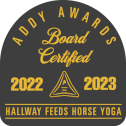Using Nutrition to Improve the Body Condition Scoring of Horses
Improving the Body Condition Scoring of Horses
Those involved in the horse industry, whether because of breeding, racing, or riding, all have a common goal: to ensure that our horses are in prime physical health. Determining the overall health of a horse can be accomplished in a variety of ways. The easiest—and often the most convenient—method is the Henneke Horse Body Condition Scoring System, allowing you to assess and rate the overall fat deposition or “condition” on the horse by looking at specific body locations. If a change in body condition is desired, it can be altered through proper nutrition.
Body Condition Scoring of Horses: An Overview
Assessing the fat deposition on a horse’s body is both a visual and a palpable practice that looks at six key areas: the crest of the neck, behind the shoulder and elbow, withers, ribcage, loin, and tailhead. After scoring each of those areas, an average score is given for that individual horse. Scores range from 1 (emaciated) to 9 (obese). A horse with a body condition score of a 5 or 6 is considered average.
Feeding the Underweight Horse
If the body condition score of a horse falls below a 4, you should increase their total caloric consumption. If a horse is severely underweight, this should be done slowly. All rations should begin with a reliable forage program. In this case, it would be best to utilize a good quality legume hay, such as clover or alfalfa, both of which are more calorie-dense than grass hay. In addition to forage and fresh water, a concentrate should be used as an extra source of calories. Feeds like Prep 14 or Fibrenergy are gut-friendly options; they offer a 20% increase in calories over conventional sweet feeds by incorporating a higher concentration of fat and digestible fibers.
Feeding the Overweight Horse
If a horse is above a body condition score of a 7, it is best to limit their total calories. Unlike the underweight horse above, the overweight horse can get by on a lot less. In this case, a good quality, mature hay such as grass or timothy, will provide your horse with a solid forage foundation. In addition to your forage program, it’s crucial to look at the type of concentrate your horse is consuming. When feeding the “easy keeper,” it is essential to remember that they may not need the additional calories as an underweight horse would. If that is the case, they should be supplemented with a protein, vitamin, and mineral ration balancer that is designed to provide all the required nutrients without the extra calories.
Feeding to Maintain Ideal BCS
An ideal body condition score will depend significantly on the horse’s breed, purpose, or discipline. For example, racehorses will have a lower, leaner “ideal” body condition score than reining horses. If the body condition score for your horse is appropriate for their intended use, then do not stray from what is working. Maintain their current diet and exercise regimen.
It’s essential to recognize that a horse’s body condition will undergo seasonal changes, much like your pasture availability. Assessing your horse’s body condition allows you to catch any fluctuations early and adjust your feeding program accordingly. Learning how to body condition score takes practice; remember, consistency is the key to being accurate!
To check out some of our products that may aid in your search for proper nutrition, contact our experts today to find your perfect feed!








